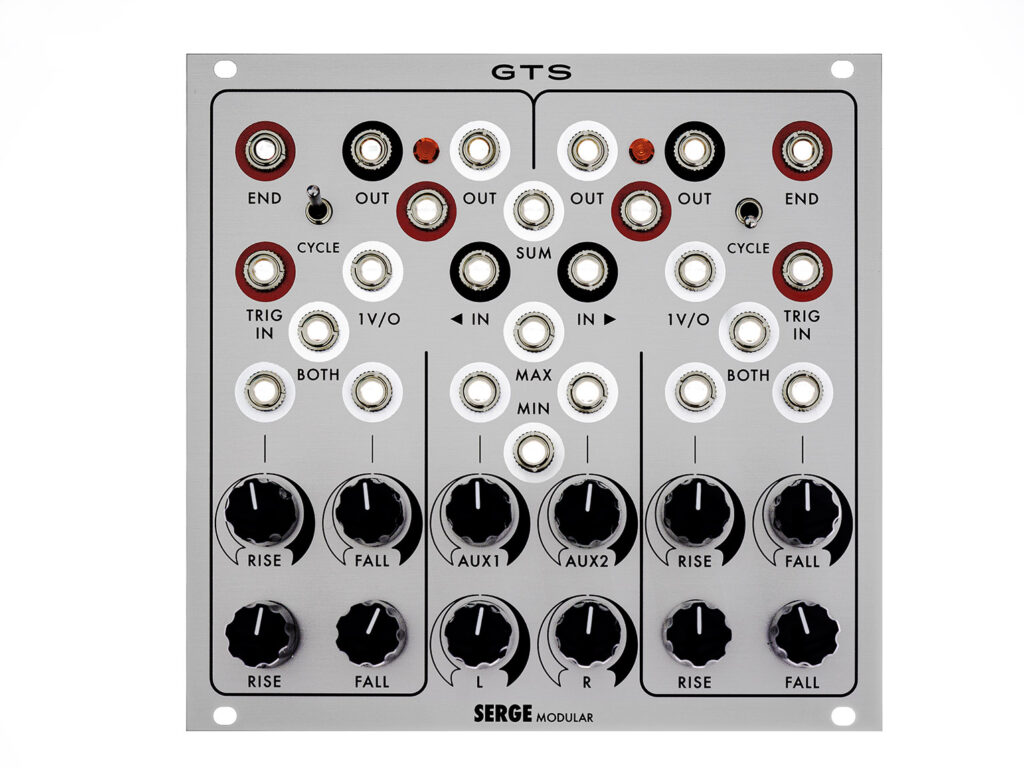May 2024 Eurorack round-up
This month, we take a deep dive into why you should be excited about a new Serge module, check out a bargain from Make Noise, plus winners from ADDAC and DivKid.

Serge GTS Slope Generator Reloaded
Our first module this month is essentially an update of the Serge Dual Universal Slope Generator, first released way back in 1976, a couple of decades before the idea of Eurorack even existed. Despite that, the DUSG was a major influence on the design of the Make Noise Maths, one of the most popular Eurorack modules around. Before we get on to exactly what it does, a quick history lesson…
In modular synth lore, Bob Moog and Don Buchla stand out as the most famous pioneers, but there’s a strong case to be made that Serge Tcherepnin should be held in similar esteem to those two titans. While never quite as popular as Moog or Buchla synths, the Serge Modular System was another classic design of the early 70s, widely considered in retrospect to have been a bit more complicated than contemporary Moog or Buchla designs, although that’s partly down to the simple fact they weren’t as common.
The original Serge Modular format – which is still manufactured under licence from Tcherepnin by Random*Source – uses 4U rack spacing and banana plugs, but the GTS we have here is part of the brand’s efforts to translate Tcherepnin’s designs over to the Eurorack format, both in terms of size and electronic compatibility (voltages, impedances, patch cable formats, and so on). While Random*Source have previously offered licensed Eurorack versions of the DUSG, the GTS is a thorough redesign of the module carried out in conjunction with Tcherepnin himself.
The GTS is essentially a pair of identical slope generators joined by a four-channel mixer (with two aux inputs) and circuits from the Serge Peak And Trough module as part of a ‘max and min’ processor section, which compares the levels of the main outs and aux signals, providing the larger or smaller values of each respectively. Like the Maths module, the GTS can be used as a function generator, sawtooth/pulse oscillator, voltage-controlled LFO or envelope generator, and much more. The real focus here, though, is on how the slope generator core has been redeveloped for extreme speed and accuracy, all the way up to transient rise times of 13 µs and a maximum frequency of 27 kHz, with precise 1V/oct tracking. The net result is a module which can do all sorts of things well, but specialises as an audio-rate oscillator with some neat tricks up its sleeve; combine the two sides as a complex oscillator, create twangy filter-style effects, experiment with FM or just use one side of the module to modulate the other. Not the cheapest, but fairly priced at just under £500 for a module which packs vintage power in spades.

Make Noise CH.SVR
Speaking of Maths, Make Noise’s new CH.SVR (‘channel saver’) module is a bit of a spin-off from the much-loved signal processor. Split into three sections, the CH.SVR offers two channels which can scale, amplify, attenuate or invert a signal (or generate DC offsets when no signal is patched in). The third section is a two-input crossfader which can also be used as a simple attenuator. Standard and inverted sum busses also allow you to add, subtract, mirror or invert signals.
There’s a lot you can do here, from fairly simple modulation control through to waveform mixing. There’s a bit of a learning curve if you’re not used to signal processors, but it’s a much easier proposition to get your heads around than the Maths (or the GTS for that matter). A much simpler module all round, but great value at just under £100 and worth having if only for the option to set up and control modulation.

ADDAC System ADDAC508 Swell Physics
ADDAC’s range continued to throw up interesting new ideas. The ADDAC508 Swell Physics is a modulation generator based on the concept of modelling ripples in a body of water, translating the height of imaginary buoys into control voltage signals to create an organic, fluid modulation source. The Swell Physics is harder to explain than it is to use. You don’t really need to understand the actual physics of it all perfectly to get good results in terms of modulation signals which ebb and flow. The bipolar outputs from each of the four buoys are visualised by LEDS at the top of the panel.
Once you’re happy with the basics, there are various clipping modes which can work like wave folders, limit the signal or force the wave to go through its maximum or minimum and into the opposite end of the scale. Two gate outputs, meanwhile, are activated when output 1 is smaller than 2 or 3 is bigger than 4. There’s a lot to explore here, but even if you just use the average output signal (an average of all four outputs), there’s a lot of fun to be had setting up slow, shifting modulation sources which evolve in uniquely organic fashion.

DivKid Output Bus
Finally this month, YouTuber DivKid collabs with Befaco on the Output Bus module. Designed as a summing mixer and output module, the options are fairly self-explanatory here: feed in Euro level signals (or a stereo pair of line or synth level signals) and you get a summed Euro level output, a pair of line outs, two headphone outputs with their own level control, a master level control and LED VU meter.
It’s a purist summing mixer approach, with no level or pan/balance controls for individual channels, no mutes or solos, and so on. That means you’ll probably want to use it after sub-mixer modules, as a final summing point for all your signals. It’s not a glamorous module by any stretch of the imagination, but the Output Bus is one of those straightforward designs which gets the job done and makes life easier.
Greg Scarth